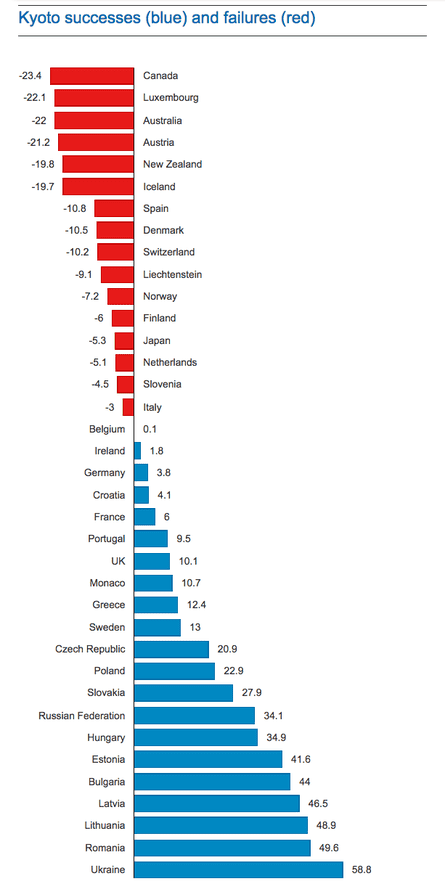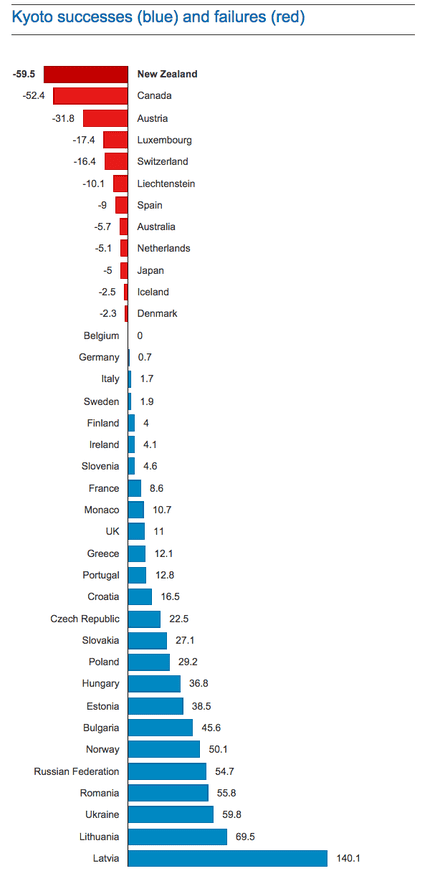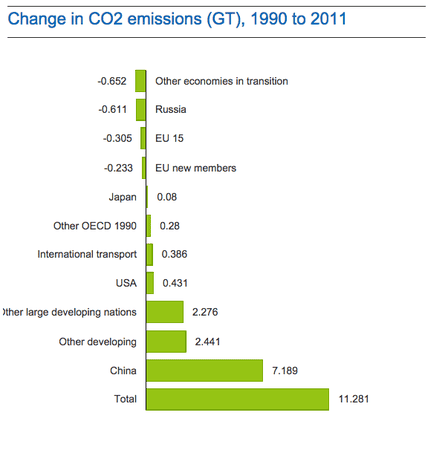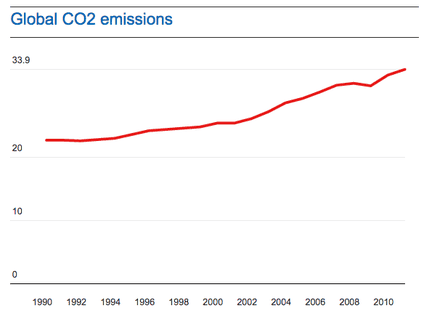Under the Kyoto protocol most developed nations other than the US committed themselves to targets for cutting or slowing their emissions of the key greenhouse gases that cause climate change. The targets varied between nations. Some were allowed to increase their emissions by a certain amount; others were required to make significant cuts. The average target was a cut of around 5% relative to 1990 levels by 2012 (or more accurately 2008–12).
To give a sense of how countries have performed against their targets, in the charts below we've plotted the gap between each nation's percentage target (data from here) and its actual percentage change between 1990 and 2010 (data from here). So for example if a nation had a -10% target but its emissions increased by 10% it scores -20, of if it had a 5% target but cut by 15% it scores 10.
Here's how the results looks when land use emissions and sinks are excluded:

And here's how it looks if land use is included:

The European picture is more complex than these charts suggest, because under the European Trading Scheme companies across the continent can trade emissions permits between each other. Once these traded emissions are taken into account some countries move around – most noticeably Italy which switches from being ahead of its target to substantially behind. For a detailed look at how the European nations have performed, see here.
Overall, there are more successes than failures and the sum of emissions from nations with Kyoto targets have fallen significantly. In the meantime, however, emissions in the rest of the world have increased sharply – especially in China and other emerging economies, as the chart below makes clear.

This blurs the success of the nations with Kyoto targets because much of the growth in China and other emerging economies has been driven by the production of goods and services exported to developed nations. According to one study I reported on last year, when you look at total carbon footprint of each nation (including imports and excluding exports), the progress made under Kyoto looks extremely poor, with Europe's savings reduced to just 1% from 1990 to 2008 and the developed world as a whole seeing its emissions rise by 7% in the same period.
Overall, the result is that global emissions have showed no sign of slowing down, as the chart below shows. In that sense, the Kyoto protocol has been a failure. But it was unquestionably an important first step in global climate diplomacy. The question is whether a more ambitious second step will follow in time to avoid unacceptable risks of devastating climate change.

.





Comments (…)
Sign in or create your Guardian account to join the discussion